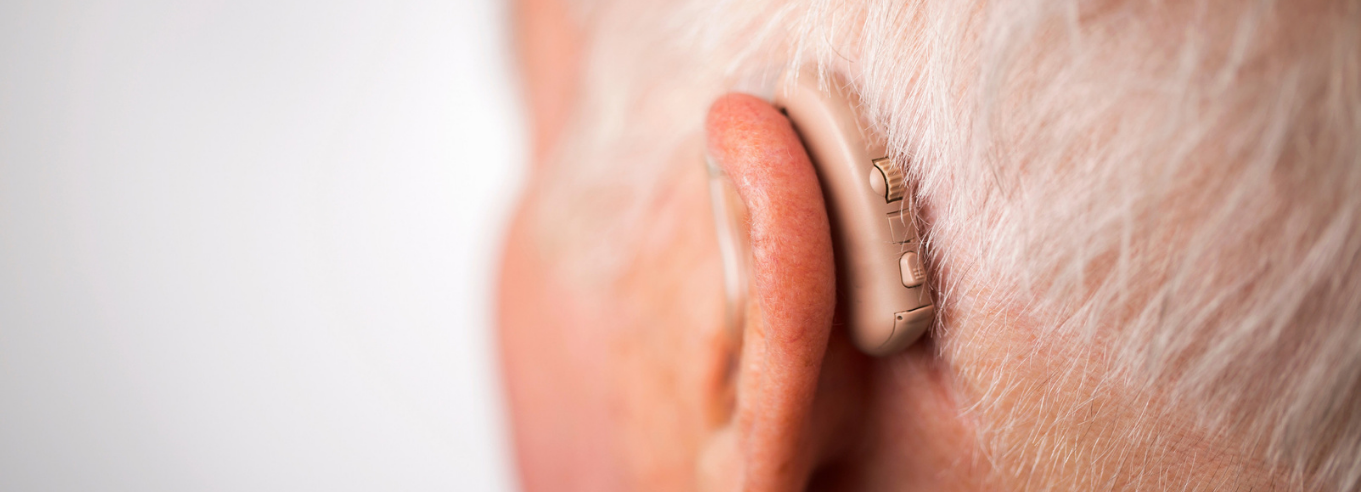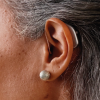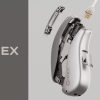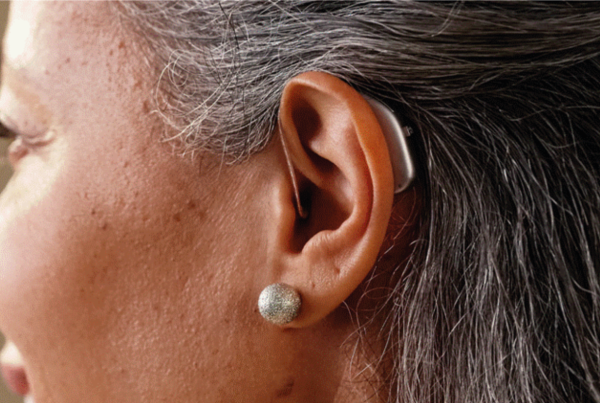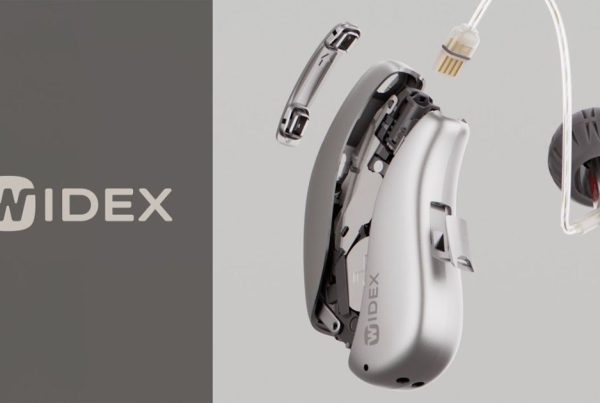Making the decision to have hearing aids fitted is almost always an amazing feeling. They can drastically improve the quality of life in someone struggling with hearing loss and make it far easier to thrive in social situations.
There are many different types of hearing aids available, though, as well as loads of models and features to consider. We want to help you make the right choice for you, so we’ve put together a handy guide that explains all of the different kinds of hearing aids.
Our audiologists will always chat through your options with you and help you make the right decision, but knowing all of the facts can make that decision a little less daunting.
Behind the ear (BTE)

Behind the ear (BTE) hearing aids are your typical hearing aids, they are considered the most common. They feature a small plastic section that fits behind your ear, meaning that it can’t be seen from the front. It also makes it easier to cover up with hair or a hat.
The plastic section is attached via a small tube to an earmould. These moulds are custom-made and fit comfortably within your ear.
BTE hearing aids are considered the easiest to use and are generally suitable for most forms of hearing loss. We offer these hearing aids from a wide variety of different manufacturers, meaning you can choose from different designs and colours.
In the ear (ITE)

Unlike BTE hearing aids, in the ear (ITE) hearing aids do not feature a plastic section outside of your ear. Rather, they fit snugly just outside the opening of the ear.
Once again, earmoulds are created to ensure that the hearing aid fits comfortably. This also ensures that they’re a bit more subtle than BTEs as they can only be seen from the side, rather than the side and back.
ITEs can be more difficult to use than BTEs but are still suitable for most kinds of hearing loss. Their more subtle design also means that you may feel more comfortable with them in.
In the canal (ITC)

In the canal (ITC) hearing aids are smaller than BTEs and ITEs and only fill the opening of the ear. They extend further into the ear canal than the previous hearing aids as well.
They’re less visible than many other hearing aids so they’re great for people who want to keep their hearing aids on the hidden side.
Unfortunately, they’re not usually powerful enough for people with severe hearing loss. Therefore, we generally recommend them for people with mild to moderate hearing loss.
Invisible hearing aids

Invisible hearing aids are the smallest devices available on the market. They fit further into the ear canal than any other hearing aids, making them almost invisible to other people.
Whilst their invisibility is a big bonus, it also means that they have to be small. Due to this, they aren’t recommended for people with severe hearing loss. For those suffering from mild to moderate hearing loss, they should be perfect.
It’s also worth remembering that they can be quite fiddly. Some models require fitting and removal by one of our audiologists and should not be removed by yourself.
We hope that you found this introductory list of hearing aids helpful! If you’d like to find out more about a particular kind of hearing aid, you’re concerned about hearing loss, or you’d simply like to make an appointment, please get in touch.

